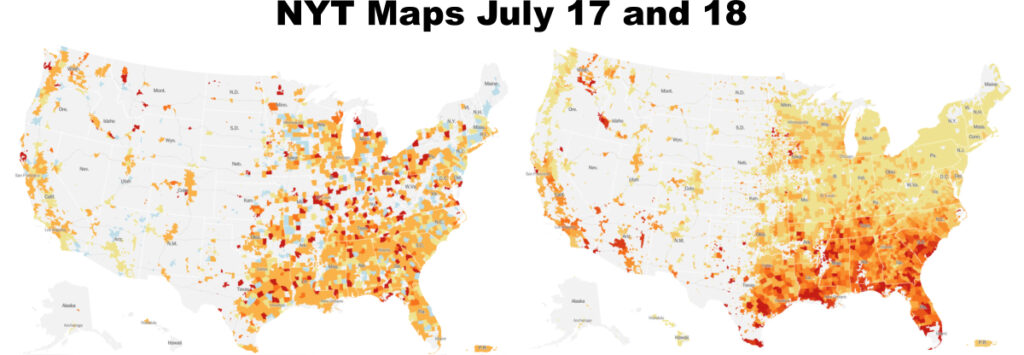
Generally, when you fight off a virus like the coronavirus, your body builds antibodies that seek out and destroy the invaders. After the virus is gone, the antibodies remain and help you fight off the disease in the future, providing immunity.
Vaccines leverage this antibody effect by causing your body to generate antibodies without causing you to be sick. To achieve this effect, traditional vaccines are made from a dead, weakened, or attenuated version of the virus. Many of the COVID-19 vaccines in development use new, advanced techniques, but they all trigger the body to make antibodies.
What some scientists are seeing is that the antibodies from COVID-19 might not stick around for long enough to provide effective, long-term protection. That means that people who catch COVID-19 and recover might catch it again some months or a year down the road. It also means that vaccines may be less effective or that people will need repeated dosing to keep their antibody levels high enough to prevent infection.
The San Francisco Chronicle just published a detailed article on this topic that is worth reading: With coronavirus antibodies fading fast, vaccine hopes fade, too.
Before you let this freak you out too much, I would add that there are memory T and B cells that remember a pathogen and allow the body to more quickly produce antibodies when a pathogen is detected in the future. I think it is too soon to have any idea if this will have an impact on resistance to reinfection by people who recovered from COVID-19 or by people who have been vaccinated.
COVID-19 by the Numbers
71,900 cases of coronavirus were reported in the past 24 hours, bringing the U.S. total to 3,660,300. This is the second consecutive day where more than 70,000 cases have been reported. Deaths remain well below 1,000, with 832 reported in the past 24 hours. As of this morning, 139,186 deaths in the U.S. have been attributed to COVID-19.
The New York Times has changed their map again, showing the number of new cases per 100,000 people instead of the total number of new cases over the past two weeks. This makes this situation look far worse because a county with 1 cases and 10,000 people looks the same as a county with 10 cases and 100,000 people. Before, those counties with low populations and low cases counts were white. Now it looks like the entire country is on fire. We have to wonder if they decided to make things look worse on purpose.

Global Numbers
Global numbers continue to climb, with 252,000 new cases of COVID-19 reported in the past 24 hours, bringing the global total to 14,089,750. Deaths increased by 6,659 to 597,361.
On April 16, just over three months ago, these were the six countries with the most COVID-19 cases:
United States 636,917
Spain 182,816
Italy 165,155
Germany 130,450
France 106,206
UK 103,093
Today, the European-centric view has changed dramatically:
United States 3,650,962
Brazil 2,046,328
India 1,038,716
Russia 764,215
Peru 345,537
South Africa 337,594
Mexico, Chile, Iran, and Pakistan have also surpassed Spain, which at one point had the second highest total of COVID-19 cases in the world. What this tells us is that the world is a big place and wile COVID-19 wanes in some locations it waxes in others.
COVID-19 is not going away. What are you doing to prepare for it?






